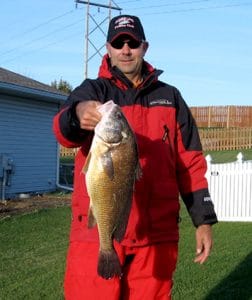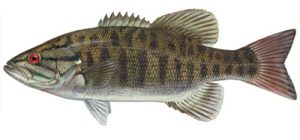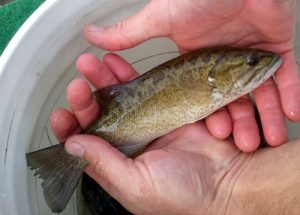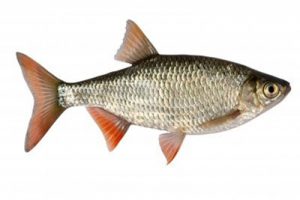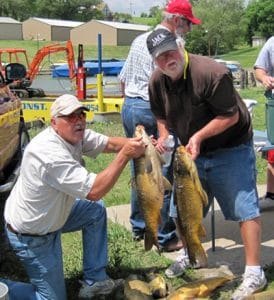The Fish of Beaver Lake
Game Fish
Muskellunge: Introduced to Beaver Lake in the fall of 2012 per the request of a majority of fishermen. The BLA board of directors approved stocking of up to 150 of these “top line” predators with donated funds over a three-year period. Forty-three of the 150 allowed were purchased and released in the lake in November of 2012. The fish stocked were 15” to 20” in length and Nebraska Game and Parks biologist Daryl Bauer expects them to grow quickly in our lake due to our abundant gizzard shad population. Reproduction, while possible in our lake, is highly unlikely due to their fry being extremely vulnerable to predation of many other fish species in the lake. Muskie are currently catch and release only in our lake and the Association asks that members catching one report the catch to fishing club officer, a Lake, Fish & Habitat committee member, or the BLA office. Proper handling of these fish is a must when you catch one and this is especially true as they grow larger. Here are some tips for safe handling.
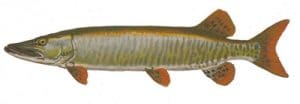
Beaver Lake size: max 45”/25 lbs maybe (TBD)
Habitat: weeds, points, edges then down to the thermocline in the warmer months
Stocked fish released at the boat ramp in the fall of 2012:
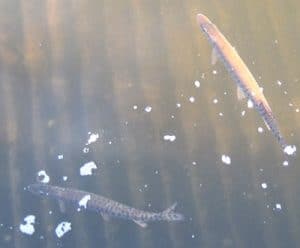
Muskie caught 10 days after being stocked:
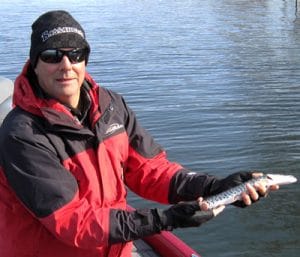
Large Muskie caught April 2016:
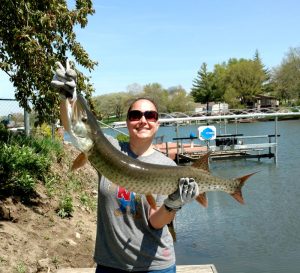
Largemouth Bass: Fish stocking records don’t show when or how many of these fish were placed in the lake. Largemouth are very abundant and one of our most popular game fish. Being our number one predator they do the heavy lifting required to keep our shad and bluegill numbers under control. Largemouths are sustained through natural reproduction. These fish attain a size of 7 lbs or maybe even a bit larger in our lake. The current creel limit for Beaver Lake Largemouth Bass is a two-fish limit 15” to 17” or one fish 15” to 17” and one fish greater than 21”. The Beaver Lake Fishing Club conducts four catch and release bass tournaments per year – see the club for dates, times, and info.
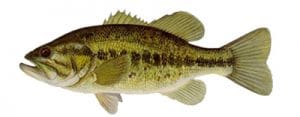
Beaver Lake size: 22”/7 lbs perhaps a little more
Habitat: weeds, points, edges, open water for shad then down to the thermocline in the warmer months
Tournament Picture:
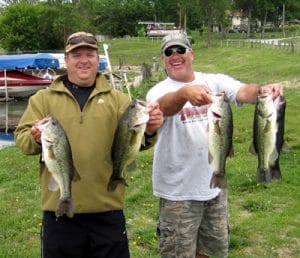
Walleye: Introduced to the lake as far back as records are kept and holding the distinction of being the most stocked fish in our lake with over 96K purchased over the years. Walleye can be difficult to locate and catch for much of the year especially for those less savvy in the ways of the “eye”. They grow to a good size in our lake with fish over 10 lbs showing up every now and then. Reproduction is possible but limited due to a lack of clean rock and gravel, the small size of our lake, and abundant silt. The current creel limit for Beaver Lake walleye is a four-fish limit 15” to 20” or three-fish limit 15” to 20” and one fish greater than 28”
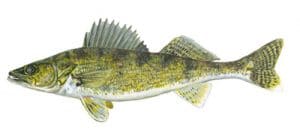
Beaver Lake size: max 32”/10 to 12 lbs perhaps
Habitat: weeds, points, rocks, then down to the thermocline in the warmer months
Walleye stocking photos:
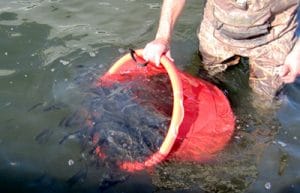
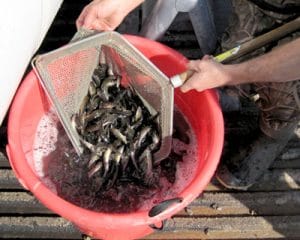
Beaver Lake Walleye:
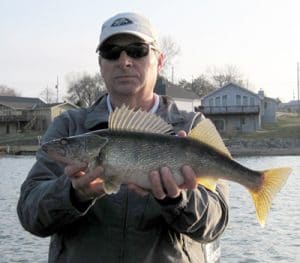
Smallmouth Bass: Introduced sporadically over the years with records indicating that 4,600 fish in total have been stocked seven of the past 21 years. Smallies are not easy to catch due to their low numbers, but each year a few show up and every now and then a real nice one running near 5 lbs is caught. Smallmouth continue to be popular in annual fishermen stocking surveys despite their low numbers. They are expensive to purchase compared to other species and can be hard to get from vendors so we can’t afford to stock them at a higher rate. Natural reproduction can occur, but smallmouths have a difficult time competing with their largemouth relatives. Lakes like ours with an established largemouth population relegate the noble smallmouth to novelty fish status. Smallmouth’s are currently catch and release only for Beaver Lake.
Beaver Lake size: max 20”/5 lbs perhaps a little more
Habitat: rocks, points, edges then down to the thermocline in the warmer months. The dam end of the lake holds more habitat that suits the smallie.
Smallmouth stocking pictures:
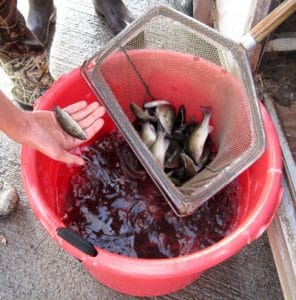
A Beaver Lake smallmouth:
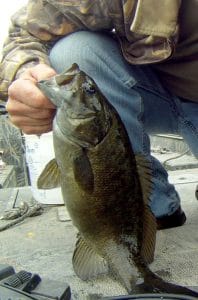
Hybrid Bass (Wiper): Introduced in 1998 with an initial stocking of 5,800 fish we’ve since stocked over 26K wipers (2nd most after the walleye) in total. Wipers spend much of the year in open water chasing shad, are heavy feeders, and are a very fast growing fish. Anglers who have figured out their seasonal movements have become pretty good at catching them on a semi consistent basis. Our wiper numbers in the voluntary creel surveys are getting better each year and their popularity is also on the rise. They were just slightly behind the walleye as the most requested fish in the past stocking survey request. Wipers have been caught up to 15 lbs in our lake and anyone who catches one above four lbs can quickly attest to the fish’s powerful, fast, long fight. Wipers can’t reproduce in Beaver Lake so they must be stocked to maintain a population. Fishermen must take care to quickly release these fish once caught especially in warmer months if you want them to survive. The current wiper limit on Beaver Lake is one fish limit daily and a minimum length of 19”. The Beaver Lake Fishing Club holds a wiper tournament each year when the fish start schooling in open water.
Beaver Lake max size: 30”/10 – 15 lbs
Habitat: mostly open water and down to the thermocline in the warmer months. Will come shallow in cooler water and are quite a site to see feasting on shad on the surface of the lake. They really froth up the surface.
Stocking pictures:
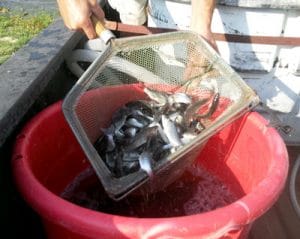
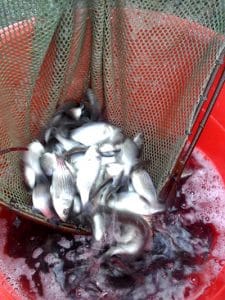
Wiper tournament winner 2012:
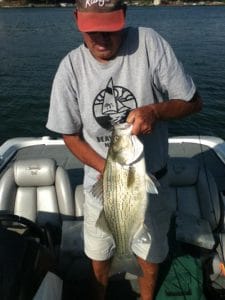
Flathead Catfish: Other than folks illegally releasing large river flatheads into the lake over the years there are no records of this fish being stocked. They are the largest predator in Beaver Lake, easily attaining sizes of 50 lbs or more. Annually it seems that folks catch a couple in the 40 lb plus range. Flatheads are one of the few species that can target larger carp and full grown gizzard shad for prey which makes them a very valuable resource. Please keep in mind that a 30 lb fish is already over 12 years old so it only makes sense to release these big fish to reproduce and fight another day. Our creel limit follows the Nebraska state limit for flathead catfish; see the state fishing guide for details.
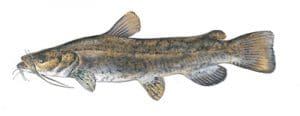
Beaver Lake max size: 42”/50 lbs or more
Habitat: weeds, points, edges, and rocks
26 pounder (35”) caught and released in 2012:
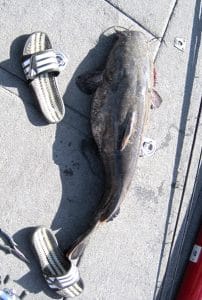
Blue Catfish:An introductory stocking of 980 8” to 10” Blue Catfish was introduced into Beaver Lake in October 2014 to provide future anglers another potential trophy fish species. Additionally BLA imposed a 17” minimum size length for all three catfish species (blue, channel, flathead) effective Jan, 2015 to aid in their ability to grow to a reproducing size. The state of Nebraska enforces a one fish daily limit and a two fish possession limit on blue cats. Catch and release is highly encouraged on blues to help them get established and to give them an opportunity to grow large. Blue cats are slow growing like most large predators, so it is imperative that we practice catch and release and selective harvest if we want to have them to achieve status. Since flatheads are able to obtain weights of 50 lbs in our lake it only stands to reason that blues should be able to do the same. Blues’ preferred prey are gizzard shad and carp which are both abundant in Beaver Lake. Blues will suspend slightly off the bottom, so suspending bait is a good fishing technique to use to target them. Cut bait, especially shad or bluegill, work great to attract these heavy feeders. Here are some tips for distinguishing between blue and channel catfish. 1) The blue has an angled anal fin (the fin just before the tail on the bottom of the fish) with more than 30 rays and the channel has a curved or rounded anal fin with fewer than 30 rays. 2) As its name indicates, the blue catfish will look blue/slate and the channel will be more of a shade of brown with spots until they reach seven to eight years of age. 3) The blue has a DEEP FORKED tail while the Channel’s tail is less forked. If you catch a blue catfish, please report it to the fishing club or office, take a picture, and then release it to keep growing.
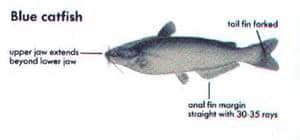
Beaver Lake max size: 50-60”/50 lbs or more
Habitat: weeds, points, edges, and rocks
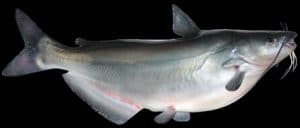
Stocking:
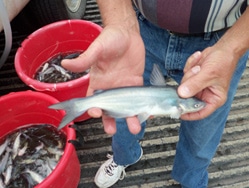
Channel Catfish: The original introduction of channel cats isn’t documented, but for the most part they are naturally occurring in the lake. We’ve been stocking them the past few years by request since their numbers seem to be down from where they once were. These fish are a favorite for many residents and having a good population is important to the community and the lake. They grow to a good size and are good fighting game fish when caught. Like the flathead they would benefit from selective harvest where the larger reproducing fish were released and smaller fish were kept for the table. Channels are naturally reproducing in the lake but appear unable to sustain a good enough population without help through stocking. Our creel limit follows the Nebraska state limit for channel catfish; see the state fishing guide for details.
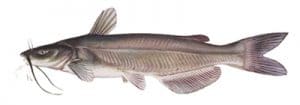
Beaver Lake size: Max seems to be 35”/25 lbs, but they can get larger
Habitat: weeds, points, edges, and rocks
Stocking picture:
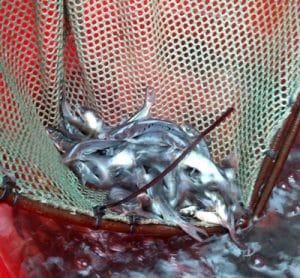
A couple nice ones:
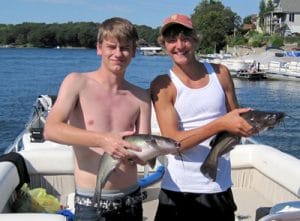
Bullhead Catfish: These fish are naturally occurring in the lake but appear to be fairly few. One does show up on a creel survey every now and then. They have no real impact on anything but are listed because they are in the lake.
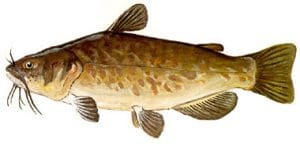
Beaver Lake size: 8” to 12”/2 lbs maybe
Habitat: mud flats especially the back of the southwest cove
Pan Fish
Please Note that the current Nebraska pan fish limit is a combined 15 fish daily limit
See the Nebraska State Fishing Guide.
White Crappie: No records exist of the white crappie being stocked, but they were obviously introduced at some point in the early years of the lake. Originally the white crappie was the only crappie caught in the lake, but lately they seem to be losing the lake to their cousin the black crappie. It seems every year that the percentage of whites caught gets lower. Crappies to three lbs or so are in the lake with many caught in the 14” to 15” range every year. Creel surveys show that 52% of crappie caught (black and white) are 10” or above. We have one of, if not the, finest crappie fishery in the state. Crappies along with the largemouth bass are the most popular fish in the lake. Crappies are a great eating fish, abundant, fairly easy to catch, and a good reproducer in the lake. The current crappie limit in Beaver Lake is 15 fish (black and white combined) with a 10” minimum length limit enforced. The Beaver Lake Fishing Club conducts three crappie tournaments each year – contact the fishing club for dates, times, and details.
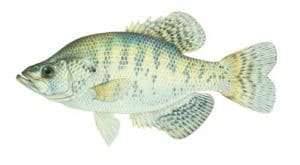
Beaver Lake size: 17”/3 lbs plus
Habitat: weeds, points, docks then down to the thermocline in the warmer months
Crappie Tournament pictures:
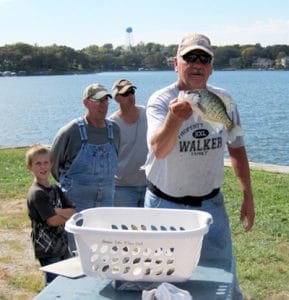
Over 2 lbs:
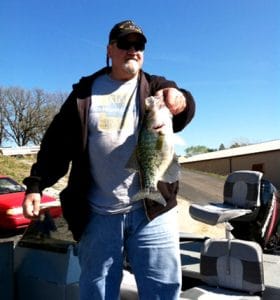
Another nice one:
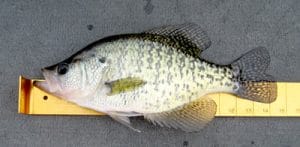
Black Crappie: These fish started to show up in numbers in the early 2000s. Black crappies are more the fish of the North and the white crappie is the more dominant fish in the southern United States, but they coexist, school together, and spawn together. In the spring when spawning both black and white crappie males take on a very black color and are sometimes confused as the same species. Click to see the difference between the two similar species. In 2012 it seemed that the majority of crappie caught most days were black crappie where 10 years ago it would have been 95% white crappie caught, so there is a transition from white to black going on in the lake for some reason. Black crappies are less tolerant of dirty water, so maybe this is a sign of how pristine our lake is?? Crappies to three lbs or so are in the lake with many caught in the 14” to 15” range every year. Creel surveys show that 52% of crappie caught (black and white) are 10” or above. It is believed that we have one of, if not the, finest crappie fishery in the state. Crappies along with the largemouth bass are the most popular fish in the lake. Crappies are a great eating fish, abundant, fairly easy to catch, and a good reproducer in the lake. The current crappie limit in Beaver Lake is 15 fish (black and white combined) with a 10” minimum length limit enforced. The Beaver Lake Fishing Club conducts three crappie tournaments each year – contact the fishing club for dates, times, and details.
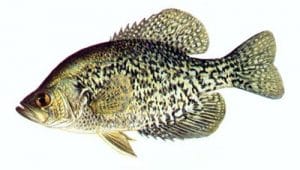
Beaver Lake size: 17”/2.5 lbs maybe
Habitat: weeds, points, docks then down to the thermocline in the warmer months
A white and a black:
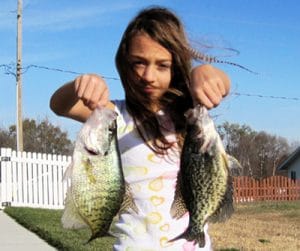
A nice black:
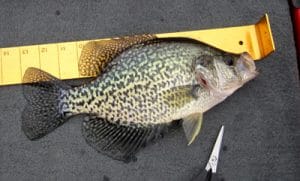
2 lb 6 oz Black Crappie:
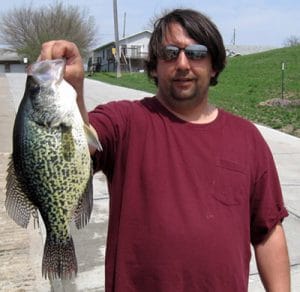
Bluegill: These fish are naturally occurring in the lake. They may have been initially stocked but no records indicate that they were. We have a large and growing bluegill population in the lake. It is an underutilized resource that could cause us difficulty if their numbers continue to grow. Our predator fish seem to focus more on eating gizzard shad and less on controlling the bluegill population. Our bluegill size isn’t spectacular, but there are some nice ones in the lake. Bluegill spawn at an early age (two years old) and are very prolific.
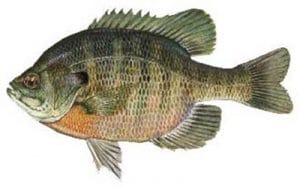
Beaver Lake size: 8”/1.5 lbs but mostly small
Habitat: weeds, points, docks then down to the thermocline in the warmer months
Yellow Perch: From 1996 through 2007 we stocked 12K yellow perch into the lake. They are now self-sustaining through reproduction. They’ve proven to be very prolific in our lake. Initially they were stocked to help our walleye with another forage fish. It is hard to say whether the walleye prefer perch or shad, but in any event the yellow perch appears to be here to stay. The average perch in the lake is probably around 9” long, but they are caught up to 16” or so. The current limit for perch in the lake is 15 fish with a minimum length of 10”
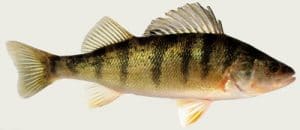
Beaver Lake size: 17”/2 lbs maybe
Habitat: weeds, points, then down to the thermocline in the warmer months
Green Sunfish: This is another naturally occurring fish that is quite numerous and caught
Beaver Lake size: 8”/1.5 lbs maybe
Habitat: really likes a rocky shoreline
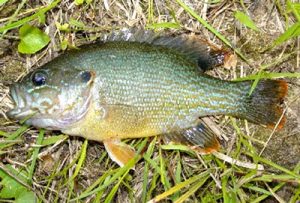
Forage Fish
Gizzard Shad: The number one forage fish in Beaver Lake. It is impossible to even guess how many shad are in the lake, but on a calm summer morning after their fry have hatched it isn’t uncommon to see schools of their young from one end of the lake to the other and in every cove feeding on the surface. Where the shad are hanging out one can place a pretty good bet that the bass, crappie, walleye, Muskie, catfish, and wipers that are feeding are also nearby. When the shad move into the coves in the spring and fall the predators follow. Likewise if the shad go deep in the summer then the predators will follow. Shad are the food that feeds the lake, they have easily digested scales, soft rays, and are high in protein and oily, and while this all sounds great all isn’t perfect with this fish. Shad feed on the same food that all our game fish fry feed on, so they compete with our young desirable fish for food. Shad quickly outgrow most of the fish species’ ability to prey on them. Shad will be 4” or more at one year old and by the time they are two years old will be 6” to 8” and too large for everything but the largest bass, walleye, wiper, and channel catfish. Flatheads and Muskie of course still see the 8” shad as a perfect snack. Shad reproduce at two years of age and by three years of age lay over 300K eggs each. They produce large volumes of partially digested feces which helps feed the algae blooms in the lake. Luckily we are on the northern edge of their range which causes a percentage of them to die each winter. We are also a deep lake which helps keep them from over running the lake.
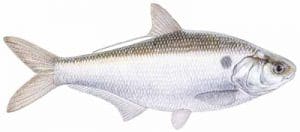
Beaver Lake size 14” to 18”
Habitat: shallow in spring and fall, open water in the summer months. Feed on plankton and organic matter
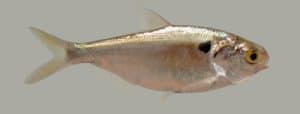
Rudd: These fish were sold as bait once upon a time and that’s how they were introduced to Midwest waters including Beaver Lake. While they aren’t encountered often they are in the lake in decent numbers. They are easiest to notice in the early spring in the back of the southwest and northwest coves. They also will school in the southwest cove where people feed fish pellets to the carp, catfish, and bluegills. They are a nuisance fish, but are also good forage for our game fish. Like the shad they also grow larger than most of our prey species can feed on and they compete with our game fish for food.
Beaver Lake size: 14” is the largest seen
Habitat: weeds
Rough Fish
Common Carp: The common carp is a nuisance for our lake just like they are for every other lake in the country. We have a large population of carp which are most noticeable in the spring when they spawn in the weeds. Pods of large carp can be seen rolling and wallowing in the weeds and under docks laying and fertilizing their eggs which are strung in sticky masses in the weeds. They dirty the water during spawning by stirring up the shallows. They also dirty the water with their feeding habit of mouthing around in the mud. They feed heavily on our desirable fish species’ eggs and even break up the nests of other fish. They are not the best table fare plus a person must know how to “score” them to get all the multiple rows of bones to cook. When you catch a carp, please dispose of it properly; DO NOT practice catch and release with these fish. An adult carp can lay up to a million eggs per year. The Beaver Lake Fishing Club holds a carp tournament each spring that is free to enter and pays nice prizes to encourage people to help “take a few out of the lake”. See the fishing club for the date, time, and details. There is no limit on the number of carp that can be kept.
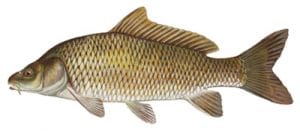
Beaver lake size 40lbs or more
Habitat: weeds
Carp Tourney Pictures (not catch and release):
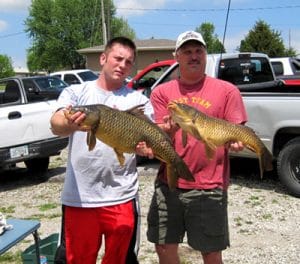
Freshwater Drum (Sheephead): These fish are quite numerous in our lake as well. They compete with many of our species for forage and are quite efficient at feeding on crustaceans and mollusks and of course also feed on shad. They follow the seasonal movements from shallow to deep like most fish. They can be caught on worms, jigs, or minnows. In the warmer months they find deeper water cover or move to the deep outside weed edges. They can be caught readily on a jigging spoon when they are deep. Drum fillet just like a white bass and have a firm white flesh that tastes pretty good especially when cooked fresh. Eat every one you catch or if that isn’t your thing then dispose of them properly like the carp. There is no limit on drum.
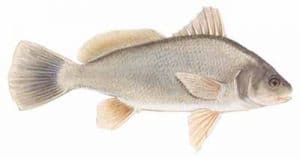
Beaver lake Size: 20 lbs or so but more commonly 2 to 8 lbs
Habitat: prefers rocks and gravel – feeds on crayfish, mussels, and shad
Here is a 7 pound fish:
